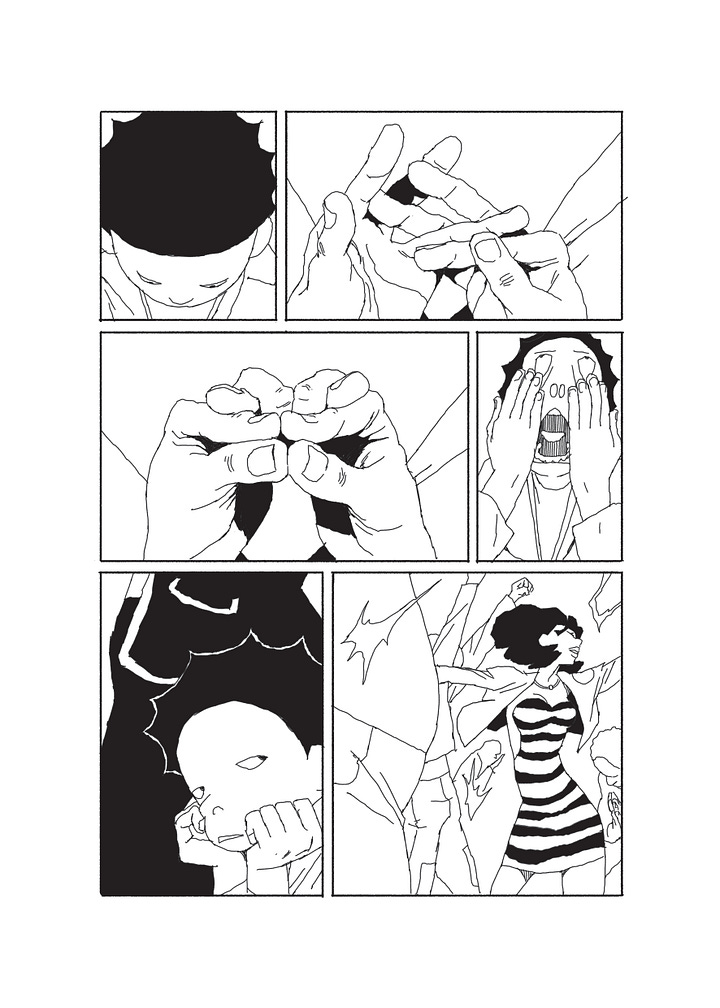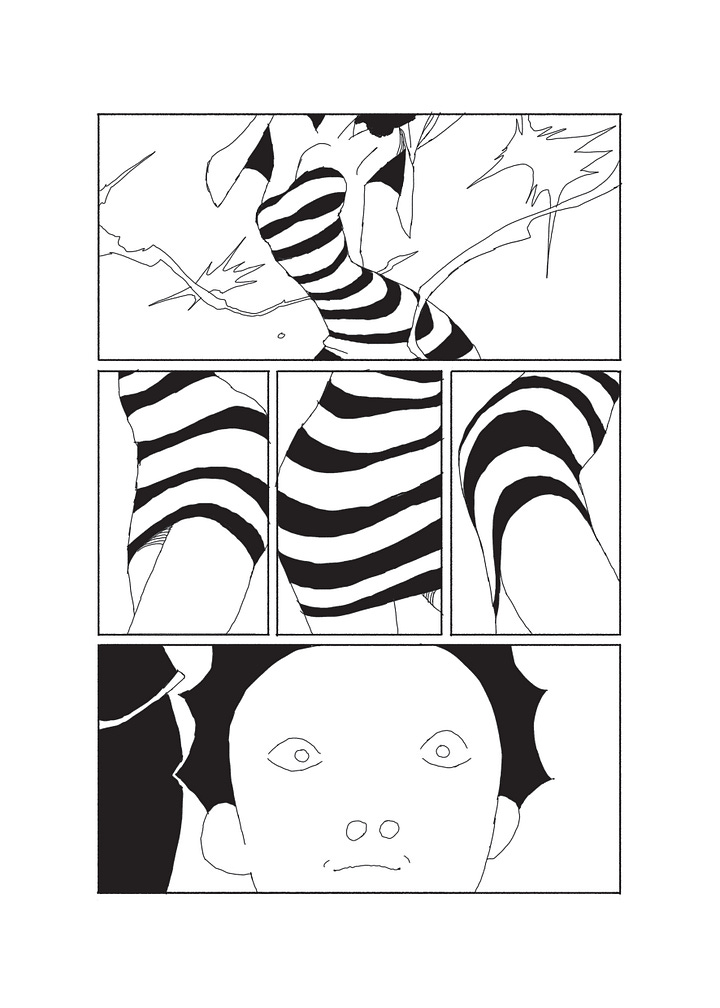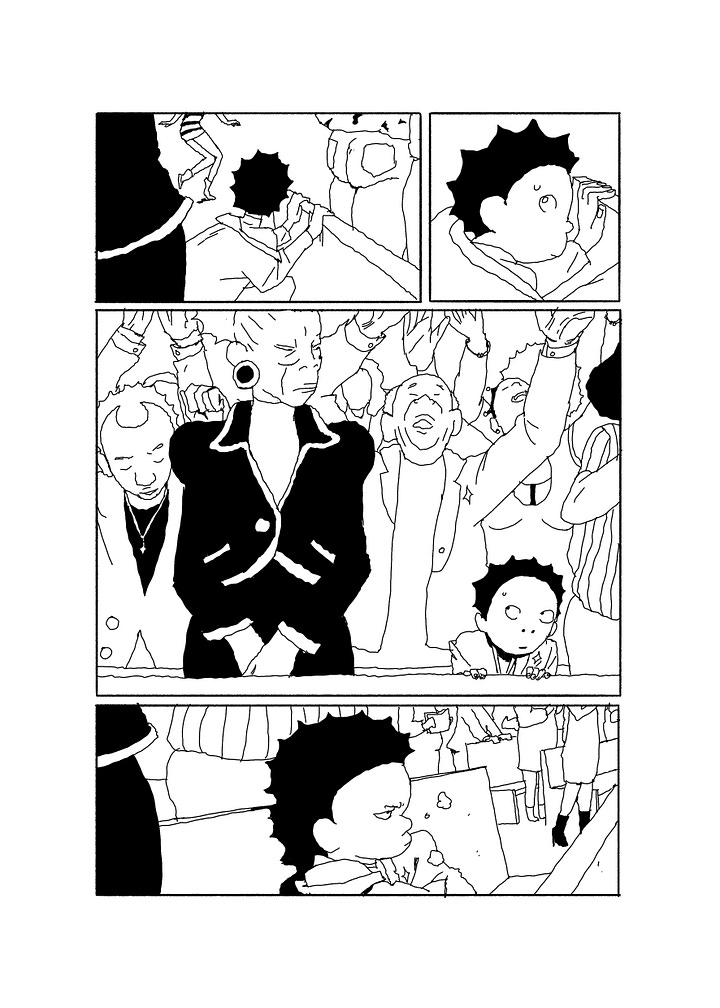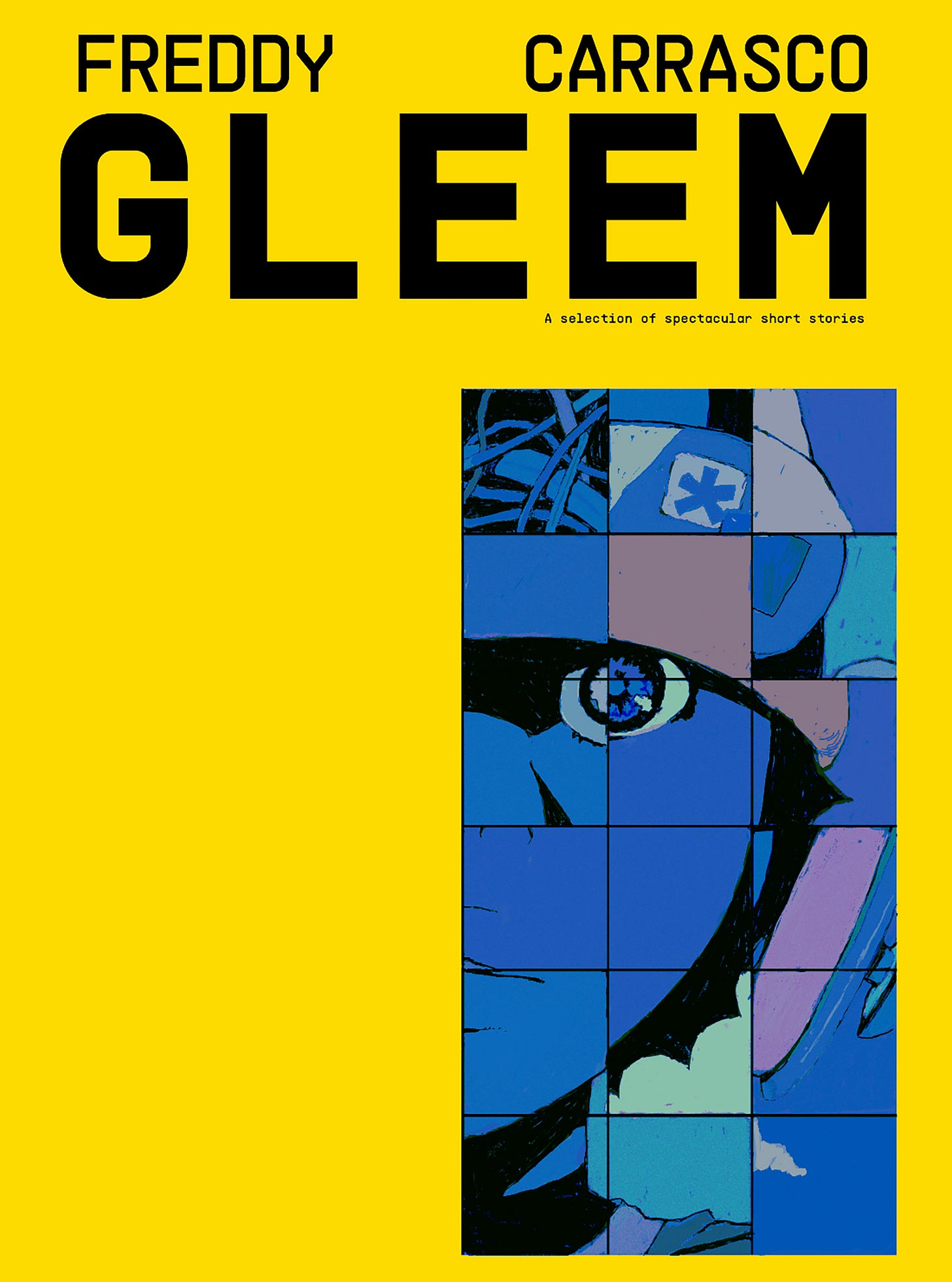Gleem is a wild cyber-trip of spare details and unexpected turns
Freddy Carrasco's heady sci-fi strip will take you places.
Required Reading is DoomRocket's love chest, opened once a month to champion a book that we adore and you should read. The latest: Freddy Carrasco’s Gleem, available now from Drawn and Quarterly.
Whether sweating buckets and tripping balls on a church pew, a journey carnal from global to cosmic, or tracking down a robot to gut for parts so a friend can get fixed, the storytelling pushes ever forward. Starting outside the club, a portrait series leads past the velvet rope, a full disposable camera's worth of pictures once inside; take it into the bathroom, then a DeLuca effect slow-motion tumble into Slumberland. If it sounds strange, it reads familiar. GLEEM is stories about what kids get up to.
So the kid going for the robot's head gets two pages, four tall panels, the obtuse arc of the swinging bat. If it takes a couple of seconds to kill someone, here's the first. The reader gets to see more of the robot the kids have been trying to catch than they ever did, and the guy is pretty weird. But so is the friend they need to save — his son, kind of — so it makes sense, but it's probably better not to think about it. This is what comes of doing drugs in the park. Doing drugs in the club, doing the drugs you find in church. The little things in life (that contribute to you needing to do drugs). An exercise in Freddy Carrasco's imagination.
The central story to the collection, "Swing," is speculative fiction, a future world of underground scientists and rogue androids. Now is the only time teenagers have ever known, so the setting is not that shocking, because nothing is. Yet, if you're picking up Carrasco's science fiction expecting him to say something about the color of exploitation, he does not disappoint. But rather than cyberpunk projections of a problem imagined into being worse, GLEEM's future is plagued by the static persistence of racism. Microaggressions are more resilient than microchips. Imperial language means the doctor's dehumanization is technically accurate. The recalled worker replacement prototype robot is Black because Black jobs are the ones targeted for deskilling.
Can Blackness cross from human to humanoid? What is the cultural inheritance of someone who has never been born? If I wanted a comic where the skin is melanated but that's as deep as it goes, I'd read the X-Men. Beyond the ethnicity of the protagonists and their creator, this comic is Black in the same, embedded sense as the politics. All those portrait panels are about fashion and culture. Black style is celebrated, not made a spectacle of. It's treated as everyday because, outside of the white gaze, it is. For Carrasco, it's not Black style in his book, it's style.
But it is Black style, though. It's not a book that's powerful by accident. Black, like in hair. Idioms. Traditions. Metamodernist, post-postmodernist, a revisionist of comics who subverts the norms while maintaining an earnest, concrete connection to the classic conventions it questions. Heavy with experimentation, but neither with representational imagery nor pure abstraction. Carrasco is playing around on the page with how panels make the space feel. The words melting away are in service to story, with Carrasco's creative rule-breaking providing direction as well as chaos.




His art is vibrant and exciting, minimal and stylized, swift, smooth, perhaps a little dangerous. Stripped, so that the details count more from the contrast. His high-relief black-and-white work is dynamic, a clean line style combined with large quantities of impenetrable ink. The space for fine details becomes scarce amongst the blocks of shadows. Dynamically spare and aesthetically lit up, the little details make the pages and panels of GLEEM crackle. Typically, comics play within the negative space, but half the page covered in ink is an ascendant emptiness that makes each panel into an artisan's print. Alex Toth and Kyoko Okazaki.
GLEEM has trimmed all excess. The art, the pulp tone, the boundaries of the backstory. Zeroes in on what you need for a good comic. Who are any of these people? What kind of circumstances developed into the weird cyberpunk future I'm reading about? How does tech like that function? Good questions. But we hit the ground running with no time for any of that. You can see the setup with your own eyes (this is, after all, a comic): mangled body on a table, more backroom than clinic, expectant faces of kids about the same age. There you go. The doctor will give you the details. That said, this finely-honed comic is hardly plot plot plot. Much of what makes it such a transcendent read is in Carrasco's repeated desire to stop the narrative and record tiny moments of atmosphere.
Choices for the psychedelic sequence are great, very filmic in the transition from one visual to another. Intentional abstractions follow logic — visual logic like transformations and dream travel — to move the story forward. The images don't make sense (boobs, mountain goats, manta ray, bubbles), but each leads to the next. At the end, grandma shakes you out of it. Hungry? The boy on pills in the club bathroom starts careening off the top and bottom of the page like Pong, duplicating into a multiple-exposure chain of club kids, evoking Muybridge photos, Winsor McCay's penchant for repetition, Emil Friis Ernst, DNA strands. The dance line of repeated-space-dude is fighting pew-pew against sparkling man heads everywhere. With GLEEM, it's impossible to accurately describe both image and impact, so trust me when I say the mix is bliss.
Despite the spare details and unexpected turns, Carrasco crushes rich and earnest character moments, ripped out of the readers' everyday, whole and perfect, despite or because of the ubiquitous fabrication of the times. Dashiell Hammett, a hundred years later, would be doing GLEEM. Carrasco's storytelling has a palpable mystique. I have gone on and on about drugs, parallels like amen breaks, but the real stuff in that church comic first story ("Born Again") is the sequence of making strange hand shapes to keep your mind occupied. Idiosyncratic methods of killing time abound in GLEEM. Doubt shows on the brow and as a wrinkle between the lip and the chin. When your friend is stuck in a tree, throw things at them.
GLEEM is available now. For ordering info, click this.
Drawn & Quarterly / $22.95
Written and illustrated by Freddy Carrasco.






